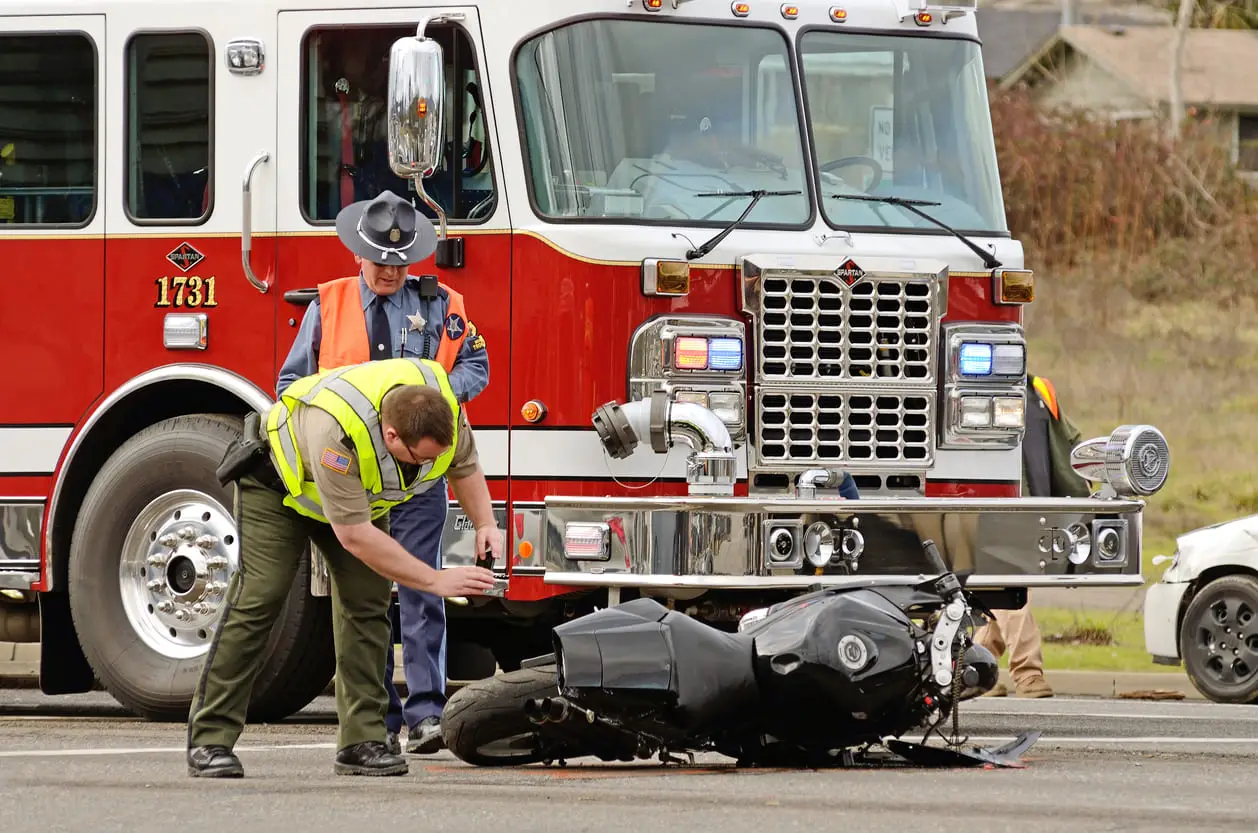Proof of fault is the most important aspect of a motorcycle accident investigation. In legal applications, it is necessary to have tangible proof that your injuries are due to negligence or an intentional act by another person or entity such as failure to maintain the road. Let’s explore the way this is done.
New York Is a No-Fault State – What Are the Rules?
According to the New York State Department of Financial Services, no-fault benefits are unavailable for motorcycle operators or their passengers. Because of this, the motorcyclist can immediately file a lawsuit against the at-fault party’s insurance if injured.
What Is Proof of Fault in a Motorcycle Accident Investigation?
Proof of negligence in New York is necessary if you file a lawsuit against another driver or government entity. Cornell Law School defines negligence as the lack of care a reasonable person would exhibit at the time. Four elements make up proof of negligence.
What Are the Four Elements That Make Up Proof of Negligence?
The following factors are necessary to have a viable case:
- Duty of Care: This element refers to the responsibility that every person has to protect everyone else on the road from harm. To do this, the driver must maintain their vehicle, obey traffic rules and continually scan the route for pedestrians, bicyclists and motorcyclists.
- Breach of Duty: The second element is breach of care. A person who fails to adhere to their duty of care violates this element. The motor vehicle driver must always observe the road and avoid distractions. For instance, a motorist needs to look for motorcyclists when changing lanes. If this does not happen, they have breached their duty of care.
- Causing Injury: Causation involves the link between an act of negligence and injury. If someone is negligent but their behavior does not result in injury, a lawsuit will not be viable. An example of causation involves a motorist turning left at an intersection and failing to yield to a motorcyclist traveling in the opposite direction. Here, the motorist does not obey the rules of the road, hits the motorcyclist and harms them. The element of causation is satisfied.
- Damages: Injuries in an accident must cause financial loss. This loss can be the monetary cost of medical treatment, lost wages and pain and suffering.
How an Attorney Proves Fault in a Motorcycle Accident Investigation
To establish negligence, an attorney or their investigative team searches for the reason the accident occurred. The cause could be a negligent motorist. lack of road maintenance or parts defects. The following are frequently a part of the investigation:
- The law firm sends investigators to the accident site to look for evidence. The evidence can include paint found at a hit-and-run crash and skid marks when a motorcyclist is forced off the road. They also look for property damage and take photos. Photos are vital to the investigation and firmly document the accident scene, vehicular damage and signage and road conditions. Photos can also document physical injuries.
- The investigators interview witnesses to the accident for information about how it happened. Eyewitness accounts can provide important details.
Additional Parts of a Motorcycle Accident Investigation
Other factors need to be considered when proving negligence in a collision:
- Preservation of Evidence: It is vital to preserve the motorcycle and the motorcyclist’s gear. Once these items are turned over to the insurer, they may be lost. Additionally, if there is any doubt that a manufacturer’s defect had a part in the crash, preserving the bike allows for a thorough examination in the future by experts.
- Crash Reconstruction Techniques: The investigators employ crash reconstruction techniques to see the location of vehicles before, during and after the collision. These procedures help establish liability.
- Review the Police Report: The police report is widely used in civil court and during negotiations with the insurance company. It contains contact and insurance information, crash location and diagrams of the scene. Weather conditions and even citations for traffic violations will be noted. Citations, if available, can be used to strengthen the case against the defendant. The law firm also looks for inaccuracies and mistakes that could harm the lawsuit’s outcome.
- Emergency Logs: The reports filed by ambulance personnel are informative, detailed accounts of injuries at the crash site. Your attorney can obtain a copy of these reports.
- Obtain Camera Footage of the Motorcycle Accident: Traffic lights and nearby businesses might have surveillance video units. This digital evidence can help prove fault. Other sources of digital evidence of the crash can come from bike-cams or an eyewitness’s mobile phone.
- Injury Data: Talking to medical experts provides valuable information about a client’s injuries, treatment and the time needed to heal.
Road Defects Can Cause a Motorcycle Accident

It is not always human error that is responsible for a motorcycle crash. Road defects pose a significant threat to motorcyclists.
Because bikes are harder to balance, a pothole can initiate an accident. So does a curved road that lacks proper signage or debris such as sand or gravel.
The government agency in charge of roads is responsible for signage and road maintenance. It is possible to file a claim against the city department in charge if the accident occurred because of road defects. Since the filing timetable is shorter than other personal injury deadlines, having a lawyer on your side helps.
How an Attorney Deals With a Motorcycle Accident Investigation
Your attorney looks for critical evidence and ensures that all documents are available on time. They calculate damages and work to make sure you receive the compensation you deserve. Your attorney also works hard to build a seamless case against the defendant. Accumulating evidence and building a viable lawsuit takes experience and a strong legal acumen. Reach out to a law firm, and schedule a free case review. Remember, you won’t pay a thing unless you win your case.

